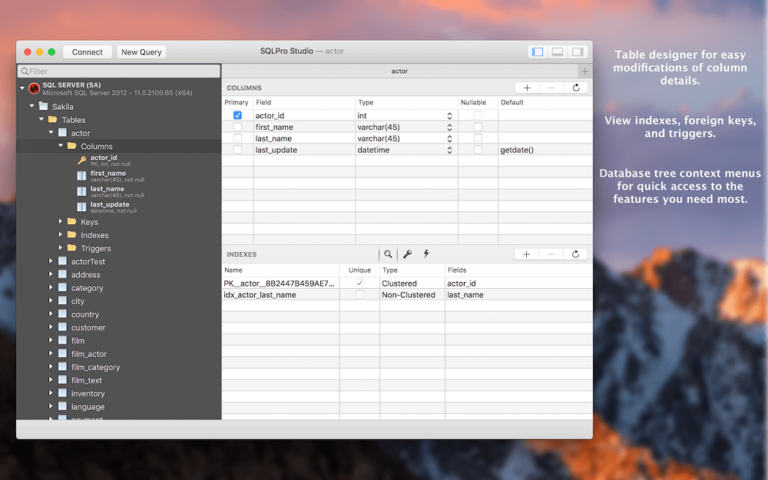

The requested details are relatively straightforward. The above is the connection information for a standard database, but you can also choose the SSH tab to use SSH to connect to your database, depending on your server’s configuration and security. When you launch Sequel Pro, if you have no databases set up yet, you’ll be greeted by the screen that asks you to create a new server connection.
Sqlpro for mysql install#
Getting started is a simple process you download the application, install it, and then launch Sequel Pro! Setting up a New Database Connection
Sqlpro for mysql pro#
Sequel Pro is an easy way to manage your databases on macOS. This provides significant security advantages over methods that require users to login using only a MySQL user and corresponding password. Sequel Pro also provides options to use SSH keys from within the application, in order to let you use it to manage databases over SSH, using keys rather than a username and password. You can set up as many database connections as you need in a favorites list, allowing quick access to those which you need to get at repeatedly. Sequel Pro is a native application for macOS. This post, however, will illustrate the use of a third option for macOS users: Sequel Pro While useful, this can be inherently insecure, providing a web interface for MySQL users.Īnother option is MySQL Workbench, a program that can be downloaded for use on many major operating systems, and can remotely connect to databases for management and planning purposes. Users can head to a particular address and port, login as a database user, and visually manage databases on that server. This is a web based tool, one that is installed on your web server. It seems that one of the most common tools used for that purpose is phpMyAdmin. Many developers who use MySQL for their databases may be pros at managing MySQL databases from the command line, but others really need a visual tool, something with a graphical interface, to use when managing databases.

Thank you for supporting the partners who make SitePoint possible.

This article is part of a series created in partnership with SiteGround.


 0 kommentar(er)
0 kommentar(er)
